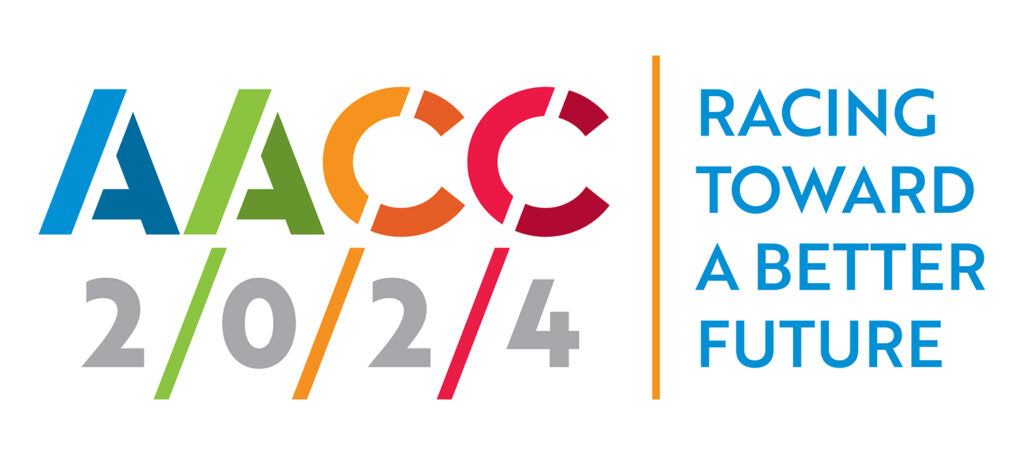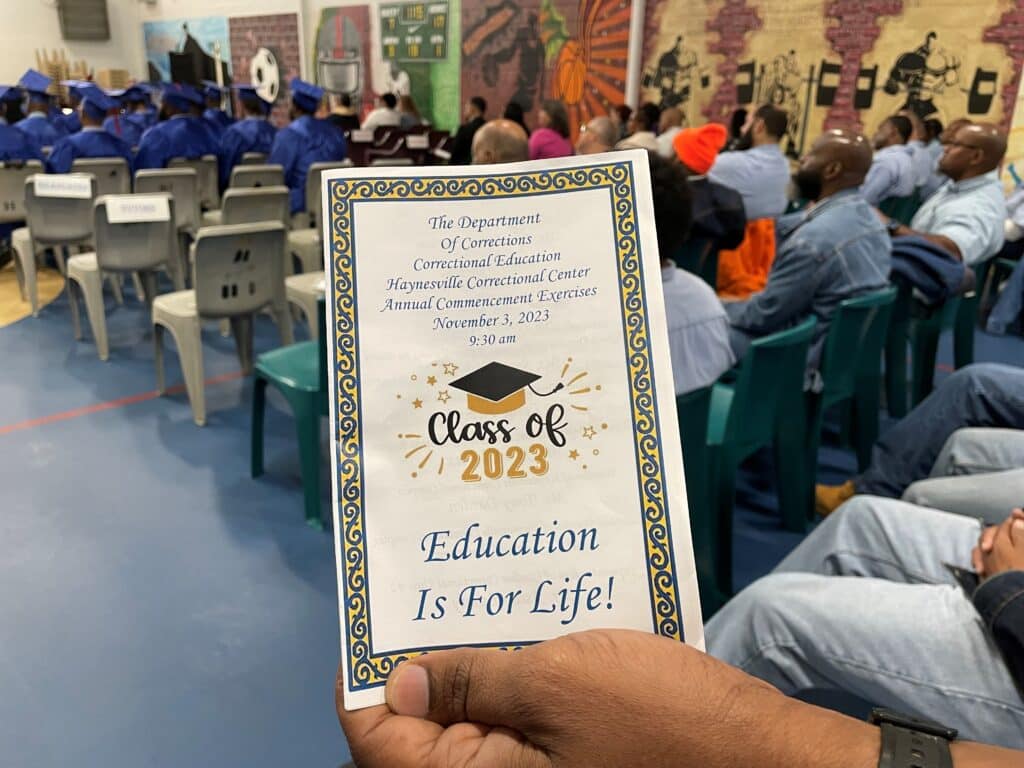A section of the sprawling Violent Crime Control and Law Enforcement Act of 1994, a/k/a the Crime Bill, overturned a section of the Higher Education Act of 1965 that allowed prisoners to receive Pell Grants. Prior to that reversal, nearly 800 college programs had been established in about 1,200 prison or jail facilities across the U.S. Three years later, the number of schools offering prison education had shrunk to seven.

“College programs in prisons and in jails were relatively normal. It was understood. It wasn’t a boutique,” says Terri Erwin, liaison to higher education for the Virginia Interfaith Center for Public Policy, a statewide public policy advocacy organization. The passage of the 1994 Crime Bill “wrecked the business model for schools. … It speaks to how important Pell is as a driver in making it possible for colleges to do what I think plenty of them want to do, and will want to do, and that incarcerated people would benefit from.”
Editor’s note: This article continues a series that examines some of the topics and sessions that will be featured at the American Association of Community Colleges’ annual convention, which will be held April 5-9 in Louisville, Kentucky. Registration closes Friday at 5 p.m. ET.
In 2015, with the 1990s “tough on crime” era in the rearview mirror, the U.S. Education Department (ED) put out a request-for-proposals (RFPs) for colleges to begin rebuilding the pre-1994 model, through the Second Chance Pell Grant Experiment. And last year, under the Free Application for Federal Student Aid (FAFSA) Simplification Act of 2020, the doors opened again for incarcerated people to apply for Pell grants.
A lot to work through
Representatives of two schools in Virginia that have participated in the Second Chance experiment will appear on an AACC 2024 panel, along with Erwin of the Interfaith Center, to talk about the successes they have achieved, the challenges faced and the lessons learned.
“Every state is having to figure out how to get from a small handful of pilot programs, which were the Second Chance Pell initiative, to something resembling a public policy approach,” Erwin says. “And that’s where the sticky business resides.”
Eric Barna, vice president of instruction at Rappahannock Community College in Warsaw and Glenns, Virginia, says two schools in the state initially signed up as part of the 2015 RFP, which later expanded to four.
“We’re called experimental sites for a reason: to figure out how to do this and to make it more generalizable,” he says. “We hope to give the audience at least a little bit of help with, how do you manage some of these things? And where have we been successful?” With 23 community colleges across the state, he adds, “How do we expand what we’re doing so that it reaches all the other correctional facilities and community colleges?”
John Donnelly, vice president of instruction and student affairs at Piedmont Virginia Community College, based in Charlottesville, says that some people might think: “Oh, now that there’s full access for Pell, for all incarcerated students who qualify, geez, open the doors, and let them all come.”
“It’s just not that easy. It’s got a lot of hurdles to overcome, a lot of barriers that are unintentional, but they’re there. And we want to go through that, from the lens of partnerships, of people we have to work with, we have to convince. … But also, how do we work with the Department of Corrections, when we both have overlapping policies and procedures, and they may not be aligned. And then, we have to ensure quality.”
Erwin notes that 95% of prisoners eventually will be released.
“So how do we prepare them better for being employable, in better kinds of jobs?” she says. “How do we help them role-model education for their children, while they’re incarcerated even, which is a big deal. The nuts and bolts of how to do education, I think the community colleges have got that down. … This is just a community of people who stand to benefit from it themselves; but also, the larger society will benefit.”
Successes in the pilots
At Rappahannock, one of the successes to date has been a partnership with the school’s local reentry facility around short-term workforce programming aimed at training students to work in the solar energy farms growing like kudzu in the region.
“There’s a lot of emphasis in Virginia with data centers and those kinds of things, with having alternate power sources rather than fossil fuel,” Barna says. “Solar has been a big thing. It’s been really interesting because students who may not feel they are ‘academic’ are getting exposure to a college program that, they’re like, ‘This is college?’ It changes that whole [self-doubting] dynamic.”

Another success that Barna cites has been the widespread exposure of the prison education program.
“It’s not hidden behind anything. It is front and center,” he says. “That’s what our president is talking about with our community. Our board members are taking it out in the community, and holding it up, and saying, ‘Not only are we doing all this great work for students on campus, but we’re also doing this.’ And if we could do that, college by college, service area by service area, we would have the public behind us, we would have the legislators behind us, there would be that will to do these programs even more.”
Piedmont Virginia has graduated more than 150 inmates and garnered interest from some public four-year institutions in providing two-plus-two pathways for them to finish a bachelor’s degree, Donnelly says.
Erwin says her agency is currently advertising for a justice-system-impacted staff person.
“When I get those resumes, and I look down there, and I see the associate degree from one of their schools, it makes me super-happy to know that these are folks who are rebuilding their lives,” she says. “They’re advancing; they’re moving on. And that degree, it does speak to people who look at their resumes. It means something not just to them, as a personal success, but it communicates to anyone who comes across them that they’re capable.”
Top challenges to date
Among the more significant challenges the pilot colleges in Virginia have faced, and possibly the easiest to fix, is quickly expanding access, Donnelly says. One way to do that is via technology, but departments of corrections tend to be leery due to security concerns. For now, Barna says, inmate students have no access to computers either for research or even word-processing purposes, partly due to space constraints.
“We’re teaching in the late 1980s,” he says. Accrediting standards say that an off-site program “has to mimic what we do on campus. It has to be as similar to that experience as possible. And if you take technology out of the equation, how do we argue that it’s as similar as possible for the experience the student is having on campus? For instance, our students hand-write their papers. … Our students need these skills when they’re released. Try to go out and fill out a job application these days, [with] pen and paper. It’s not done.”
Another significant challenge that prison education programs face is scalability, Erwin says.
“The pilot programs are fabulous as boutique, pilot, experimental programs,” she says. “The real challenge for the public good resides in the scaling of the opportunity for college education across states and across carceral facilities.”
That requires senior-level administrators at departments of corrections and statewide community college systems to talk about why and how to do so, Erwin adds.
“If there’s really going to be a scaling of the programs, a deep understanding of what the proposition is, a deep understanding of what the business model of it is — a buy-in and an agreement to partnership at high level, I think, is what will be required,” she says.
Benefits to the public — and business community
The public also has to understand why prison education programs benefit their communities, Barna notes.
“When I’m talking to somebody in the public about, ‘Yeah, we do a prison ed program,’ sometimes they’ll kind of look askance at you,” he says. “And I’m like, ‘Look, 95% of these folks are going to be released and are going to come back to your community and could be your neighbor. Do you want that person to have an education and job skills?’”
Prison education programs benefit the business community as well as consumers, especially given workforce shortages in areas like dental hygienics, for example, Erwin says. The Virginia Department of Corrections released about 13,000 people a year in 2019, the most recent figure she could find, more than the largest collegiate graduating class in the state.
“When you look at those numbers, and you think about how carefully states and economic development people look at graduates and what fields they are going into, and how many of them we are producing — what do we need to grow the economy and be competitive with every other state — this is a large pool of people, she says. “And you’re talking about federal money that can come down at no cost to the state to further equip them for more targeted jobs that will create more economic mobility for them, but also drive more economic development for the state. So there’s just a lot of angles on this, a lot of potential winners.”

